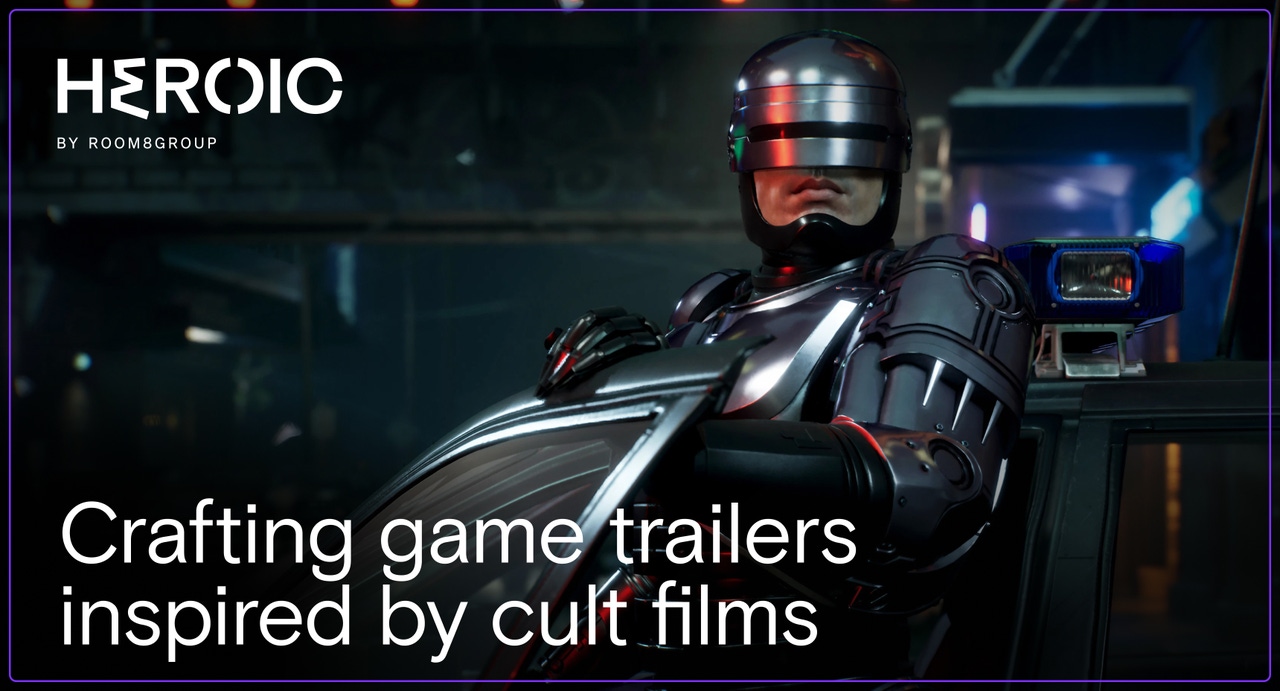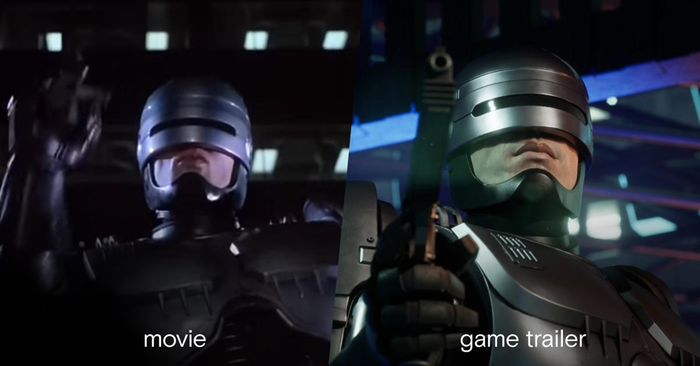Trending
Opinion: How will Project 2025 impact game developers?
The Heritage Foundation's manifesto for the possible next administration could do great harm to many, including large portions of the game development community.

Featured Blog | This community-written post highlights the best of what the game industry has to offer. Read more like it on the Game Developer Blogs or learn how to Submit Your Own Blog Post
Making a game trailer is like making music: you have to decide what kind of piece you want to write.
May 10, 2024

Hi, I am Sandy Heslop, Head of CG, Heroic by Room 8 Group, and I’d like to dive into how to craft game trailers inspired by cult films.
Making a game trailer is like making music: you have to decide what kind of piece you want to write. Is it a ballad? A punk track? How will you play with tempo? What emotions do you want to evoke?
This all depends on the game, of course. Some trailers are so good they stick in your brain forever. They create the feeling of the game itself.
Take the cinematic trailer for the original Assassin’s Creed: what makes it so memorable 18 years later? Immediately the protagonist reveals to us what the game is about with how he hides in plain sight, his hooded, stealthy appearance, the gruesome reveal of his now-iconic hidden blade, and how he times his escape by camouflaging with white-robed priests. We the audience don’t need to be told anything, nor have we seen any gameplay; we know what the game is about, and we want to play it now.
Or consider the ‘Mad World’ Gears of War trailer, directed by Joseph Kosinski, who went on to direct Top Gun: Maverick. Widely regarded as an all-time-great game trailer, it captures the desolation of Sera post-Emergence Day, when underground ‘Locust’ sprang to the surface and stomped humanity to near-extinction. It doesn’t show the events of E-Day—it doesn’t need to. It tells you everything you need to know, without speaking a word, through the journey of Marcus Fenix, who is alone in a dark world, chainsaw-rifle in hand, fighting tooth and nail to survive the creatures he encounters, all to the backdrop of Gary Jules’ heart-wrenching Tears for Fears cover.
Both examples—Assassin’s Creed and Gears of War—were inaugural games of franchises that went on to have huge cultural impact. On the flipside, when you work with IP that has already made such an impact in a previous life—say, a popular film or comic book—the rules of the game change.
In many ways it gets simpler: you can give long-time fans what they want to see, whether that’s a scene, a line of dialogue, or even just a shot. But in such cases, you’re working with fragile china. One oversight, and BANG!, catastrophe. You’ve just shown your pig-headed ignorance to the die-hards. Good luck getting them back onside after that.
At Heroic by Room 8 Group, we had the pleasure—and the responsibility—of making the launch trailer for RoboCop: Rogue City. We knew all along we’d hit certain notes: RoboCop’s metal boot meeting the tarmac as he steps out of his police car; the shot of his car climbing the station-house ramp; and of course that line: ”Dead or alive, you are coming with me!”
A new game based on an old franchise is an extension of a cultural institution loved by millions. It has to be handled with care. It’s important to give those millions of fans what they want, and truthfully, we didn’t try to hide our fan-service. But it’s important not to go too far, or to get bogged down in it. The trailer should excite newcomers, too.
It isn’t just iconic movie IP that can do this kind of fan-service. Remember when Battlefield 2042 put this in its reveal trailer? Almost 10 years prior, a Battlefield content creator invented a move called the RendeZook, where the player, mid-dogfight, ejects from their jet, fires a handheld rocket launcher, downs an enemy plane, lands back in their jet and returns to flight. This immortalized the creator, and in so doing, sent the Battlefield community into a (positive) frenzy.
When working with cult-favorite franchises like RoboCop, a trailer is more than a way to build hype for a game: it’s an important part of a franchise and its community, because it is the first touchpoint of a new chapter. Delicate subject matter? Yes—but so rewarding when you get it right.
So how did we do it for RoboCop: Rogue City?
All visual elements, down to the way light reflected off of RoboCop’s armor, are dictated by the films’ aesthetic:

And to reiterate, the best trailers feel like the games they preview. We had to make our cinematic feel like RoboCop on a technical level.
The cyborg himself is mechanical, calculated. Because he’s the protagonist of the game, we felt the trailer—which, importantly, was 85% gameplay and 15% CG cinematic—had to recreate this feeling.
We did this with camera movement. The artists who shot the gameplay footage for the trailer recorded movement as if they, too, were RoboCops: jerky yet deliberate, like a bot scanning for lifeforms. A good example: 1:12 of the trailer. Pay attention to the camerawork as RoboCop enters the shot with the news anchor. Catch the subtle zoom-in when he speaks?
On narrative: We used Mediabreak anchor Casey Wong, who featured in the original movie in 1987, and his colleague Cindy as a narrative device to introduce RoboCop. We see thugs smash a shop window—a reference to another movie scene—where a TV is showing Wong’s live broadcast. This allows RoboCop to arrive at the scene and get out of his car in the manner that fans recognized right away. Later in the trailer we gave another nod to the original film with the line: “It seems there will be … trouble.”

If you’re a RoboCop fan, there are several moments in the trailer that will catch your eye. The most graphic of these is the “groin” shot (at 1:02). We understood that we had to fully convey the brutality with which RoboCop deals with the enemies, but the trailer still needed to be acceptable for most age groups. It took some time and effort, but after recording 47 versions of the shot, we got the perfect one.
But a fantasy world isn’t essential to make a good trailer.
Take chess—hundreds of years old and very simple in premise. Neither its age nor its simplicity prevent the chess match in Harry Potter, or the one in Star Wars (albeit Holochess), or Sherlock Holmes, from engaging us as viewers. It’s always about the people playing the game.
If you have a strong narrative and compelling characters, you can make a great trailer, because trailers are stories. An even simpler, even older game than chess is The Royal Game of Ur. And what better advert for a 4,500-year-old game than a part-match, part-history-lesson between YouTuber Tom Scott and British Museum curator Irving Finkel, the man who reconstructed the game’s rules?
As storytellers, it’s our job to find the hook. For RoboCop, the touchpoints are kind of obvious. Iconic characters, set-pieces, dialogue—it was all oven-ready; we just had to orchestrate. We felt fortunate to work with a cult favorite, and we had a great game to work with, which helps! But ultimately, trailers are stories—and stories are how you get people excited.
Read more about:
Featured BlogsYou May Also Like